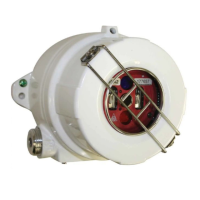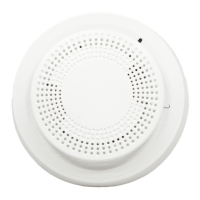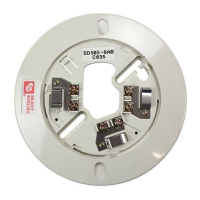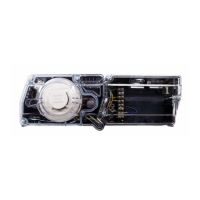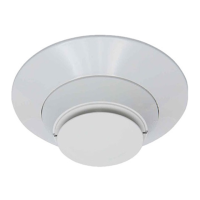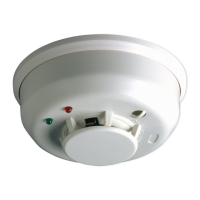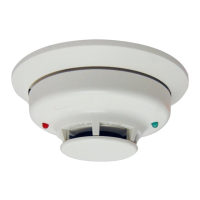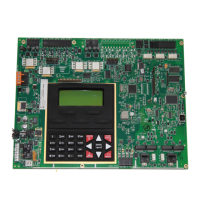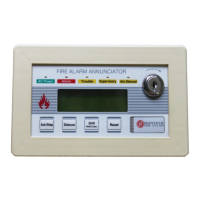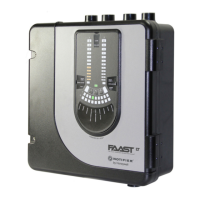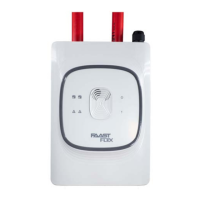OPERATOR MANUAL // SECTION 3: TROUBLESHOOTING AND
MAINTENANCE
HONEYWELL 22
SECTION 3: TROUBLESHOOTING AND MAINTENANCE
3.1 Model SS4-A/-A2 Detector Faults
The Model SS4-A/-A2 Detector issues a Fault (or Trouble) condition by de-
energizing its Fault Relay (J5 connector). The following are Detector
Faults:
a. Temperature Fault: The Detector faults if the internal temperature
during operation rises above 85°C or falls below -40°C causing both
LEDs to blink rapidly. Corrective action for this type of fault requires
factory re-certification.
b. Excessive Input Voltage Fault: The Detector faults if the input
voltage is too high (greater than 45 Volts) causing both LEDs to
blink rapidly. Corrective action for this type of fault requires factory
re-certification.
c. Low Input Voltage Fault: The Detector faults if the input voltage is
too low. The user should check the voltage between Pins 1 and 4 of
the power connector J1 or J2. In this case one LED is on until the
fault is corrected. If the voltage is below 15 Volts the user should
check the wiring and the power supply.
d. No Power Fault: The Detector faults if the input voltage is
interrupted or turned off causing the absence of LED indication. The
user should measure the voltage between Pins 1 and 4 of the
power connector J1 or J2. If none or very low voltage is measured,
the user should check the wiring and the power supply.
e. Detector Fault: The Detector faults if its Optical Sensors fail the
automatic built-in “through the lens” test. In this case one LED is on
until the fault is corrected. The user should first clean both inside
and outside of the lens thoroughly, then clean the exposed surface
of the Detector sensors and the protective grill mounted on the
outside of the housing cover. If the fault has not been eliminated
after re-assembly and powering up for 10 to 15 minutes, factory
service may be necessary.
f. Relay Fault: The Detector faults if one of its Relay circuits fails. In
this case one LED is on until the fault is corrected. The user should
return the unit to the factory for service.
g. Self-Checking Fault: The Detector faults if its internal
microprocessor finds a failure during self-checking of the hardware
and software. In this case one LED is on until the fault is corrected.
This type of fault may be caused by a number of reasons. The user
should verify proper grounding of the device and the absence of
noise on the power cables. If fault persists the user should return
the Detector to the factory for service.
h. Analog “0” current: All the above faults will produce an output
current loss (0 +
0.6mA) with the 4-20 mA module option.

